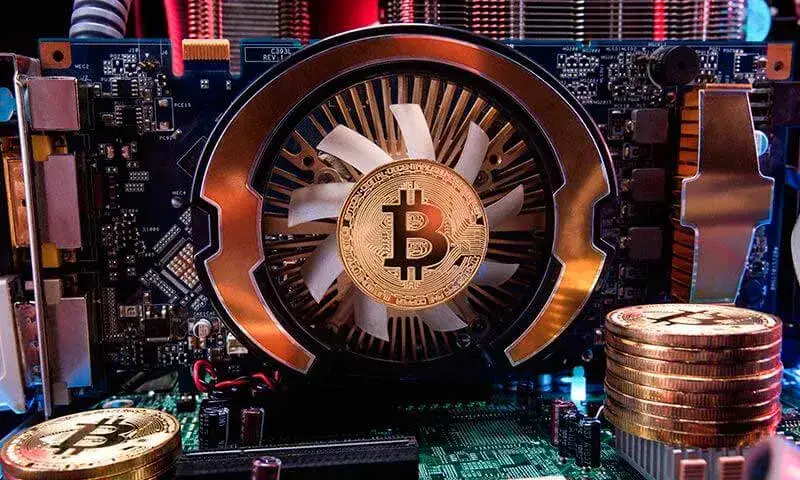Bitcoin mining is a technique that attracts millions of people around the world. Today, we want to delve deeper into how it works, what goes on behind the scenes of this lucrative activity, and whether you should start mining in 2024. Get ready for a journey through computing power, blocks, and transactions.
What is bitcoin mining, and how does it work?
Let’s start with the simplest explanation. Bitcoin mining is the process of putting new bitcoins into circulation. As true ‘producers’, miners use computing power to solve mathematical problems that validate transactions on the network. What exactly do you need to do this?

First of all, you’ll need suitable Bitcoin mining equipment. These are usually powerful computers connected to a network and performing complex calculations. As they run, the machines solve hashing tasks, which help to confirm transactions stored on the blockchain.
How are Bitcoins mined?
Once the hardware is connected to the Bitcoin network, the task of hashing the transaction data begins. It is important to know that each transaction is written in a block and that the whole forms the blockchain. Adding a new block requires solving a complex mathematical problem. This is where computing power comes into play. The more powerful the computer, the greater the chances of creating a new block and receiving the reward: Bitcoins.
Bitcoin mining: how much can you earn?
The answer to this question is not as simple as we would like. Earnings depend on many factors: the complexity of the network, the price of Bitcoin, the hash rate of the equipment, and many other parameters. However, if everything is set up correctly, mining can become a stable source of income. As the complexity of mining increases, more and more capacity is needed to make a profit.
How does Bitcoin mining work?
It’s not just about mining coins. It’s mainly about techniques for maintaining the entire network. Each block of the blockchain contains transactions. Once the transactions have been confirmed, they are combined into a block and added to the chain. But first, the miners have to solve a mathematical problem that confirms the validity of the transaction.
What are hash functions, and why are they necessary?
A hash function is the process of converting information into a unique code. By hashing the data, it is possible to guarantee that no transaction has been falsified. The more complex the task, the greater the computing power required to solve it. Miners use their powerful machines to ‘guess’ the correct hash, which then validates the block.
What is proof of work?
The Proof of Work (PoW) algorithm is used to confirm the validity of cells. People are asked to solve a complex mathematical problem that requires significant computing resources. Only the first person to succeed can add a block to the chain and receive rewards.
Basic Bitcoin mining equipment: from ASIC to PC
It should be borne in mind from the outset that specialised equipment is needed for an efficient process. One of the most popular choices is ASIC miners. These devices are specifically developed for Bitcoin mining and have far more computing power than a normal PC. Their hash rate is the most important indicator of their efficiency.
What is the difference between a PC miner and an ASIC miner?
An ordinary PC is not the best solution for Bitcoin mining. Sure, you can try, but it takes a lot of time and energy to get visible results. Instead, experts use ASIC devices specifically designed to work with cryptocurrencies. They are more efficient because they don’t perform several tasks at once, but just one: hashing.
ASIC and PC characteristics
- Hash rate: An ASIC miner can achieve hash rates of up to several terahashs per second (TH/s), while a PC has a hash rate of around ten megahashs.
- Power consumption: The ASIC requires a lot of power, but it uses its resources more efficiently than a normal PC.
- Cost: ASIC devices can cost from several thousand to tens of thousands of dollars, depending on their performance.
Key nuances of Bitcoin mining in 2024: Is it worth starting?
 Now let’s look at how profitable it is to mine Bitcoin in 2024. The complexity of mining has increased and the value of the coin is increasing, but it is also volatile.
Now let’s look at how profitable it is to mine Bitcoin in 2024. The complexity of mining has increased and the value of the coin is increasing, but it is also volatile.
Is it worth starting the process?
To answer this question, several factors need to be considered. Firstly, the complexity of Bitcoin mining increases every year. By 2024, Bitcoin mining will be more difficult than ever and will require more powerful equipment. Secondly, energy costs: the more powerful the equipment, the more energy it consumes. And finally, costs: investment in equipment will increase considerably between now and 2024.
If you have cheap electricity and good machinery, mining can still be profitable. However, don’t forget that for a regular income, you need not only equipment, but also knowledge of strategy.
What are mining pools and should I use them?
A mining pool is a collective group of experts who pool their computing power to increase the chances of finding a new block. Unlike individual strategies, pools offer the opportunity to earn a regular income and share the rewards between participants.
How mining pools work
When groups are united, the probability of a participant solving a problem increases. The benefits are clear: with a greater chance of being rewarded, miners can systematically receive small but regular payments.
Energy consumption: how much does it cost to mine Bitcoin?
The cost of energy is one of the most controversial issues. The process requires significant energy resources, and if energy costs in the region are very high, the benefits are considerably reduced.
Average energy consumption
According to statistics, the power consumption of an ASIC device can vary from 1,000 to 3,000 watts. Depending on the number of miners, the total load on the power grid can be very high. This once again underlines the importance of choosing an area with cheap energy sources.
How much you can earn from bitcoin mining: a real profit
The profit depends directly on several factors: the hash rate of the device, the complexity of the network and the price of Bitcoin. If you use a powerful device, you can earn anywhere from a few dollars to hundreds of dollars a day, depending on the complexity of the network and current conditions. But for mining to be profitable, you need to take all the variables into account: equipment costs, energy costs, etc.

conclusion
 Bitcoin mining is not a quick and easy business, but with the right approach it can be profitable. In 2024, mining could still be profitable despite increasing process complexity and equipment costs. If you’re prepared to invest in the right equipment and strategy, you can start mining today.
Bitcoin mining is not a quick and easy business, but with the right approach it can be profitable. In 2024, mining could still be profitable despite increasing process complexity and equipment costs. If you’re prepared to invest in the right equipment and strategy, you can start mining today.
 en
en  de
de  ar
ar  es
es  nl
nl  hi
hi  fr
fr  it
it  pt
pt  el
el 



